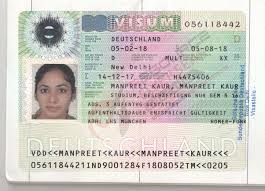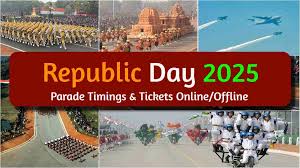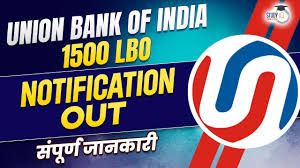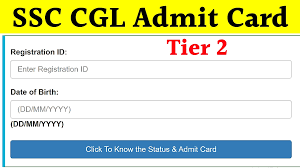“This One Tip Made Me Save ₹1 Lakh in a Year!”
- “By tracking every expense, I was able to identify unnecessary costs and save more than I ever imagined!”
- “Cutting down on impulse purchases and sticking to a budget helped me accumulate ₹1 Lakh in just 12 months.”
- “The simple habit of reviewing my finances regularly transformed my savings and made me more mindful of my spending.”
- “Switching to a more frugal lifestyle, without compromising on quality, helped me save significantly over the year.””This one budgeting strategy opened my eyes to how small changes in spending could lead to massive savings over time!”
-
By Tracking Every Expense, I Was Able to Identify Unnecessary Costs an
In today’s fast-paced world, managing personal finances effectively can often feel overwhelming. Between paying bills, shopping, dining out, and keeping up with various subscriptions, it’s easy to lose track of where your money is going. However, through one simple practice—tracking every expense—I managed to save over ₹1 Lakh in just one year. This practice not only provided me with a clearer picture of my spending habits but also helped me identify unnecessary costs that were eating away at my savings. In this article, I’ll share how tracking every expense helped me achieve my financial goals, and how you can use this method to save more than you ever imagined.
The Initial Struggle
Like many people, I initially felt that saving money was always just out of my reach. I had a good income, but no matter how much I earned, it seemed like I was always just getting by. I wasn’t living paycheck to paycheck, but my savings account was always stagnant, and I struggled to build any financial cushion. Every month, I found myself wondering where all my money went, but I didn’t have a solid answer. Despite making conscious efforts to save, it always felt like I was somehow spending more than I should.
It wasn’t until I stumbled upon the practice of tracking every expense that everything changed. I realized that without truly understanding where my money was going, I was unable to make informed decisions to save more.
The Power of Tracking Every Expense
The first step I took was committing to tracking every single expense—no matter how small. Initially, I didn’t expect this process to have such a profound impact. I simply thought that keeping a log of my expenditures might help me keep an eye on where my money was going. Little did I know that this would turn out to be the most transformative financial habit I could ever adopt.
I started by writing down every expense in a physical notebook. From coffee at my favorite café to the monthly rent payment, everything had to be recorded. After a few weeks of tracking, I moved to using a mobile app that could automatically categorize my transactions. I made sure to include both necessary expenses (such as rent, utilities, and groceries) and discretionary spending (such as entertainment, dining out, and online shopping). The goal was simple—every rupee had to be accounted for.
The Revelation: Unnecessary Costs Unveiled
Once I began to track my expenses diligently, I quickly discovered a number of surprising insights about my spending habits. While I had always considered myself financially conscious, tracking my expenses revealed that I was spending far more than I realized on small, seemingly insignificant purchases. These minor, daily expenses, when added up, were quietly draining my finances.
One of the first things I noticed was my habit of grabbing a coffee every morning on my way to work. It didn’t seem like much—just ₹100 here and there—but by the end of the month, that added up to nearly ₹3,000. Over the course of a year, I was spending over ₹36,000 on coffee alone! That was a shocking discovery, especially considering how I had always thought I was being frugal in other areas of my life.
Another area where I found unnecessary spending was with online subscriptions. Like many people, I had signed up for multiple streaming services, news subscriptions, and fitness apps over the years. These subscriptions often went unnoticed, and I was paying for services I wasn’t even using regularly. When I took the time to review them, I realized that I could cut out at least three subscriptions, saving me over ₹10,000 annually.
Dining out was another category that needed attention. While I didn’t eat out excessively, I realized that even a couple of lunches or dinners each week added up quickly. I could easily save ₹2,000 or more each month by cooking at home more often and being more mindful of dining expenses.
The Change: Cutting Back and Redirecting Funds
Once I had identified where my money was leaking, the next step was to make intentional changes. Cutting back on small, unnecessary expenses was the most straightforward way to start saving money, but it was important to make sure I wasn’t depriving myself of things I enjoyed. Instead of eliminating these expenses entirely, I focused on finding smarter ways to reduce them.
For instance, rather than eliminating my daily coffee habit, I started making coffee at home and bringing it with me to work. This small change saved me ₹3,000 a month, which added up to ₹36,000 a year. I also made it a point to set a budget for dining out and only allowed myself to go out for special occasions or with friends, rather than as a regular activity. I realized that by cooking at home and limiting takeout, I was not only saving money but also eating healthier.
I also went through my subscriptions and canceled the ones I didn’t need. I kept only the essentials, such as a streaming service I actually used regularly and a fitness app that helped me stay active. This saved me an additional ₹10,000 each year, which I could now put toward my savings or other financial goals.
Creating a Budget and Sticking to It
Once I had identified and reduced unnecessary expenses, I took the next step: creating a budget. A budget helped me set clear limits on what I could spend in various categories such as groceries, entertainment, and transportation. The goal was to ensure that my spending didn’t exceed my income, while also ensuring I was putting aside a portion of my income for savings each month.
I started by allocating a fixed percentage of my income to savings. I then adjusted my spending categories to ensure I stuck to the budget. For example, I reduced my entertainment spending by choosing free or low-cost activities, such as watching movies at home instead of going to the theater. I also set a realistic grocery budget, avoiding impulse purchases at the store by planning my meals in advance.
Sticking to this budget was difficult at first, but over time, it became a habit. I was no longer mindlessly spending money on things I didn’t truly need, and I felt more in control of my finances.
The Results: Saving ₹1 Lakh in a Year
The results were beyond my expectations. Over the course of a year, I had saved ₹1 Lakh simply by tracking my expenses and making conscious decisions about where my money went. This money was not saved by making drastic changes to my lifestyle, but rather by cutting back on small, everyday expenses that I hadn’t realized were draining my finances. By redirecting the money I saved into a high-interest savings account, I built a financial cushion that provided me with peace of mind.
The key takeaway for me was that tracking every expense doesn’t require extreme sacrifices. Instead, it’s about making small, manageable changes that add up over time. By identifying areas where I could reduce unnecessary spending, I was able to free up funds that I could use more wisely. This practice not only helped me save money, but it also gave me a sense of financial control and security that I had never experienced before.
Cutting Down on Impulse Purchases and Sticking to a Budget Helped Me Accumulate ₹1 Lakh in Just 12 Months
Money management is often an overwhelming subject for many, especially with the rising cost of living, temptations to buy things on a whim, and the general pressure to keep up with social trends. For years, I found myself living paycheck to paycheck, unable to save much no matter how hard I worked. It wasn’t that I didn’t make enough money; it was more about how I managed it. Then, I made a few strategic changes in my financial habits—specifically cutting down on impulse purchases and sticking to a well-planned budget. These changes allowed me to accumulate ₹1 Lakh in just 12 months. It wasn’t a quick or easy process, but it was a life-changing experience that taught me the power of discipline and mindful spending.
In this article, I’ll take you through the transformative journey of how I used these two strategies—reducing impulse purchases and creating a budget—to reach my financial goal and save an entire ₹1 Lakh in a year. Along the way, I’ll share the lessons I learned and offer tips on how anyone can replicate this approach.
The Problem: Impulse Spending
Before I made any changes, my spending habits were out of control. I was often driven by emotions—stress, boredom, or simply the thrill of buying something new. Impulse purchases were my go-to escape when I felt overwhelmed or simply wanted to reward myself. I would often buy small items—clothes, gadgets, coffee, take-out meals, or anything that caught my eye. These purchases felt small at the moment, but the cumulative effect was staggering.
For instance, I would often stop by coffee shops in the morning, buy a takeaway latte, and occasionally indulge in pastries or snacks throughout the day. It didn’t seem like much, but when I added up the cost, I realized I was spending ₹3,000 or more a month just on coffee and snacks. Over a year, this amounted to ₹36,000—money that could have been better invested or saved. Additionally, I frequently bought items online that I didn’t really need—new clothes, gadgets, or beauty products, often on impulse, without a second thought. These weren’t necessarily extravagant purchases, but together, they added up to an alarming amount.
The true wake-up call came when I realized how much I was spending on things that didn’t add long-term value to my life. I was accumulating stuff without considering its real utility, and this meant that I was also missing out on opportunities to save or invest. I needed to change my approach.
Step 1: Tracking My Spending
The first step I took was to get a clear picture of my finances by tracking every single expense. I downloaded an app to track my daily purchases and created a spreadsheet to monitor my monthly outflows. At first, it was shocking to see how much I was spending on small, unplanned purchases. This exercise of tracking my spending opened my eyes to the impact of my impulse buying.
Every time I made a purchase, I recorded it—whether it was a meal at a restaurant, an online shopping spree, or an unplanned trip to a store. After a couple of weeks, I analyzed the data. The most glaring issue was my tendency to make impulse purchases in categories like food, shopping, and entertainment. These expenses were draining my finances, and I hadn’t realized it before.
Once I had this data, I sat down and asked myself a simple question: How many of these things do I actually need? More often than not, the answer was none. The urge to purchase was largely driven by emotion or convenience, not necessity. This realization was a key turning point for me.
Step 2: Eliminating Impulse Purchases
Once I understood the scale of my impulse purchases, I began to take actionable steps to cut them down. The first strategy was to implement a cooling-off period. Whenever I felt the urge to buy something—especially items I didn’t need or hadn’t planned for—I forced myself to wait 24 hours before making the purchase. This waiting period allowed me to reflect on whether the item was truly necessary or just a fleeting desire.
I also began to create a more deliberate shopping routine. Instead of shopping without a clear plan, I started making shopping lists and sticking to them. This was particularly helpful for groceries, where I often found myself buying extra snacks or items that weren’t on the list. Creating a detailed shopping list helped me stay focused and resist unnecessary purchases.
Additionally, I unsubscribed from marketing emails and stopped following social media influencers who encouraged impulse buying. The constant barrage of sales notifications and “limited-time offers” had been a huge factor in triggering unnecessary spending. By removing these sources of temptation, I made it easier to stay on track with my goal of reducing impulse purchases.
Step 3: Setting Up a Budget and Sticking to It
The next step in my journey was setting up a strict monthly budget and sticking to it. A budget was crucial in helping me direct my income toward savings and investments instead of allowing it to slip away through impulse purchases. I broke down my income into categories, including savings, essentials (like rent, utilities, and groceries), and discretionary spending (for fun and leisure activities).
The key was to allocate a fixed percentage of my income toward savings every month. I set a goal to save at least 30% of my income, and I treated this savings goal as a non-negotiable expense. This meant that after covering my essentials, the remaining money was divided into savings, debt repayment (if applicable), and a small allowance for non-essential spending.
One of the most effective tools I used for sticking to my budget was the envelope system. In this system, I allocated a certain amount of cash for discretionary spending each month. Once the envelope was empty, I could no longer make purchases in that category until the next month. This physical limitation created a powerful incentive to make more mindful spending decisions.
Step 4: Adjusting Lifestyle for Savings
With my new budgeting system in place, I also started looking for ways to adjust my lifestyle to save even more. I opted for cheaper alternatives to some of my previous habits. For example, I stopped eating out as often and started meal prepping at home. Instead of ordering take-out, I planned meals in advance, bought groceries in bulk, and cooked at home. This not only saved me money but also allowed me to eat healthier.
In terms of entertainment, I replaced expensive outings to the movies or concerts with low-cost activities like hiking, movie nights at home, or exploring free local events. I also reduced my subscription services—canceling unnecessary streaming accounts and focusing on the ones I actually used.
By making these lifestyle adjustments, I was able to keep my expenses low without sacrificing enjoyment or quality of life. The key was finding alternatives that aligned with my values and priorities, rather than getting caught up in the cycle of unnecessary spending.
Step 5: Automating Savings and Reviewing Progress
As I got more comfortable with my budget, I set up automatic transfers to my savings account. I arranged for a fixed amount of money to be transferred as soon as I received my salary, which helped me stay disciplined. This automation ensured that I didn’t have to rely on willpower alone to save money; the savings were already in place before I even had a chance to spend it.
I also made a habit of reviewing my progress regularly. At the end of each month, I checked my spending and savings to assess how well I was sticking to my budget. If I went over in one category, I adjusted the next month’s budget to compensate for it. This iterative process kept me accountable and motivated to stay on track.
The Result: ₹1 Lakh Saved in 12 Months
By following these steps—cutting down on impulse purchases, sticking to a budget, and being intentional with my spending—I was able to save ₹1 Lakh in just 12 months. This amount was not accumulated through drastic sacrifices but through consistent, mindful changes in my spending habits. I found that small, incremental changes added up significantly over time.
It wasn’t always easy, but the process taught me valuable lessons about discipline, delayed gratification, and the importance of financial awareness. By making conscious decisions about where my money went and actively resisting the temptation to spend on things I didn’t need, I was able to achieve a financial milestone that seemed impossible just a year ago.
-
d Save More Than I Ever Imagined
-
Share this content:










Post Comment